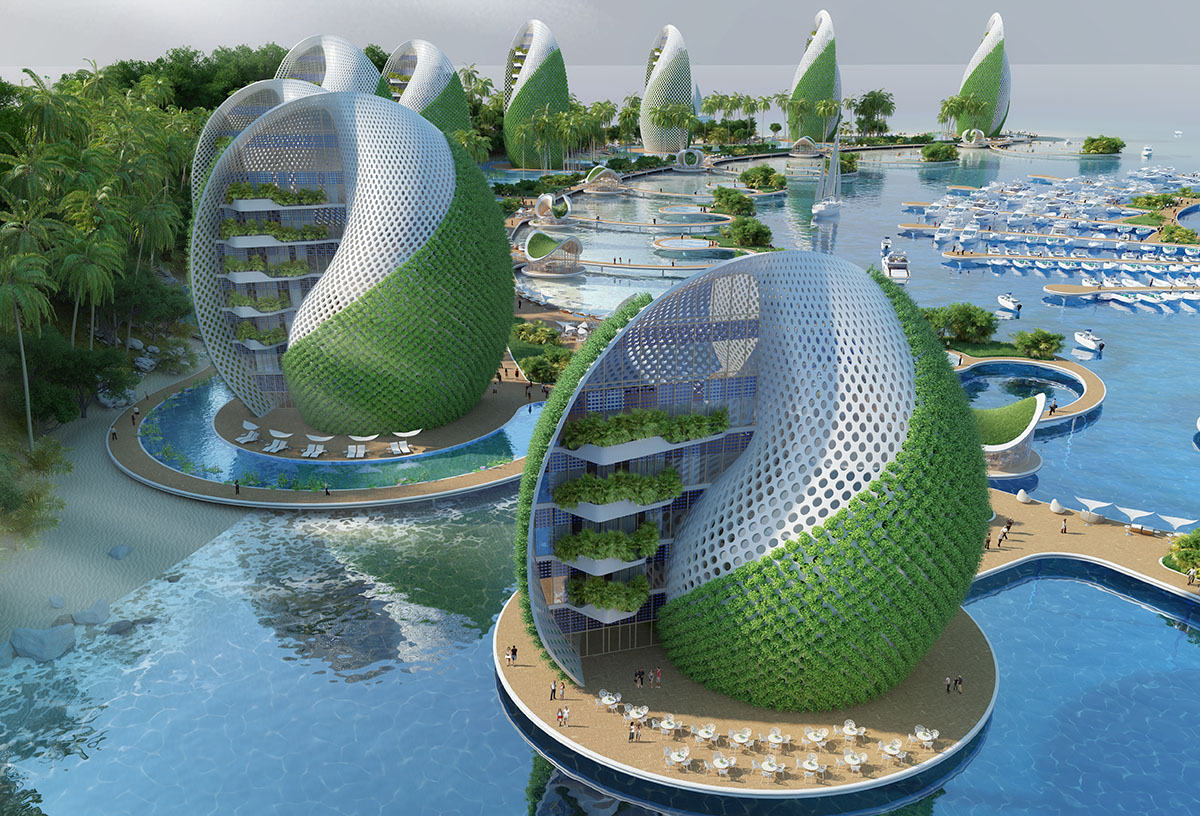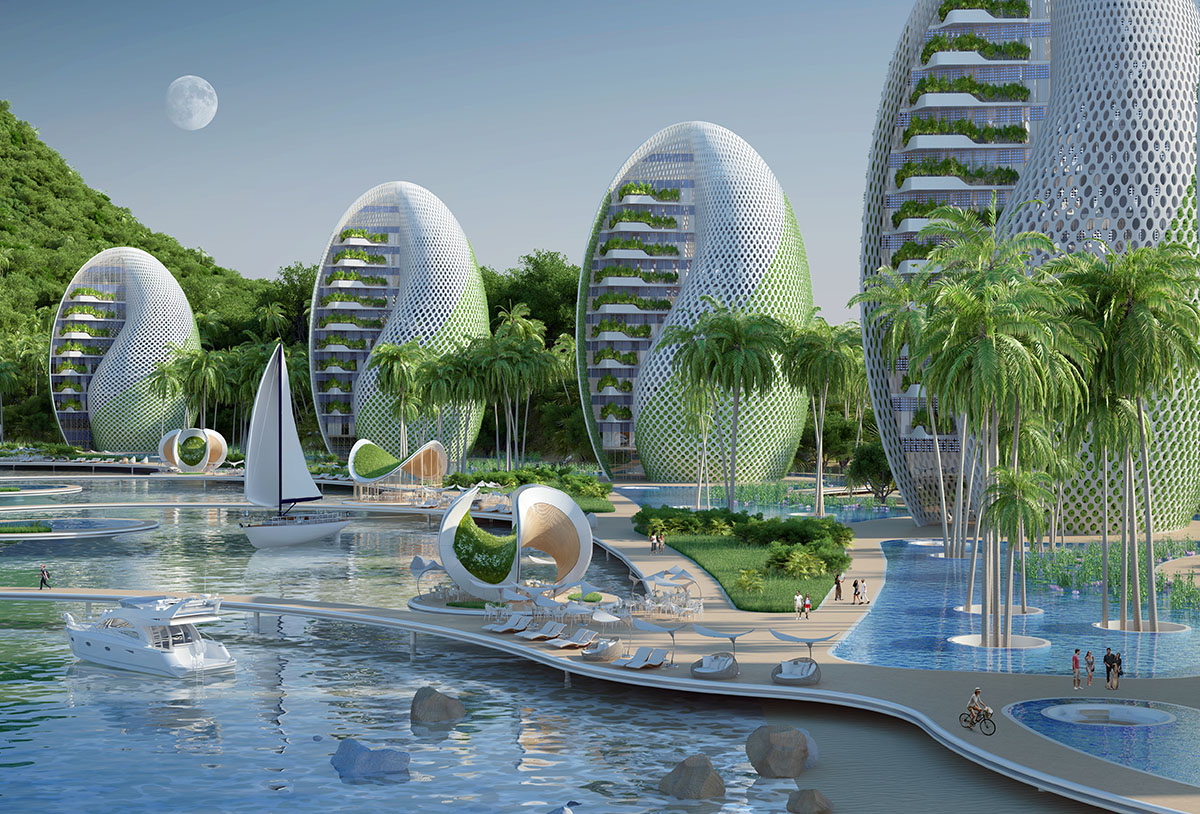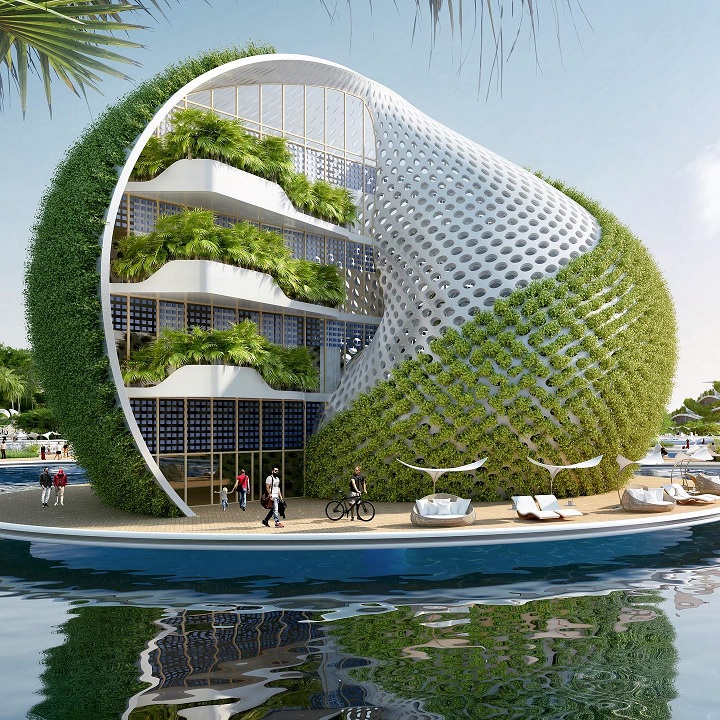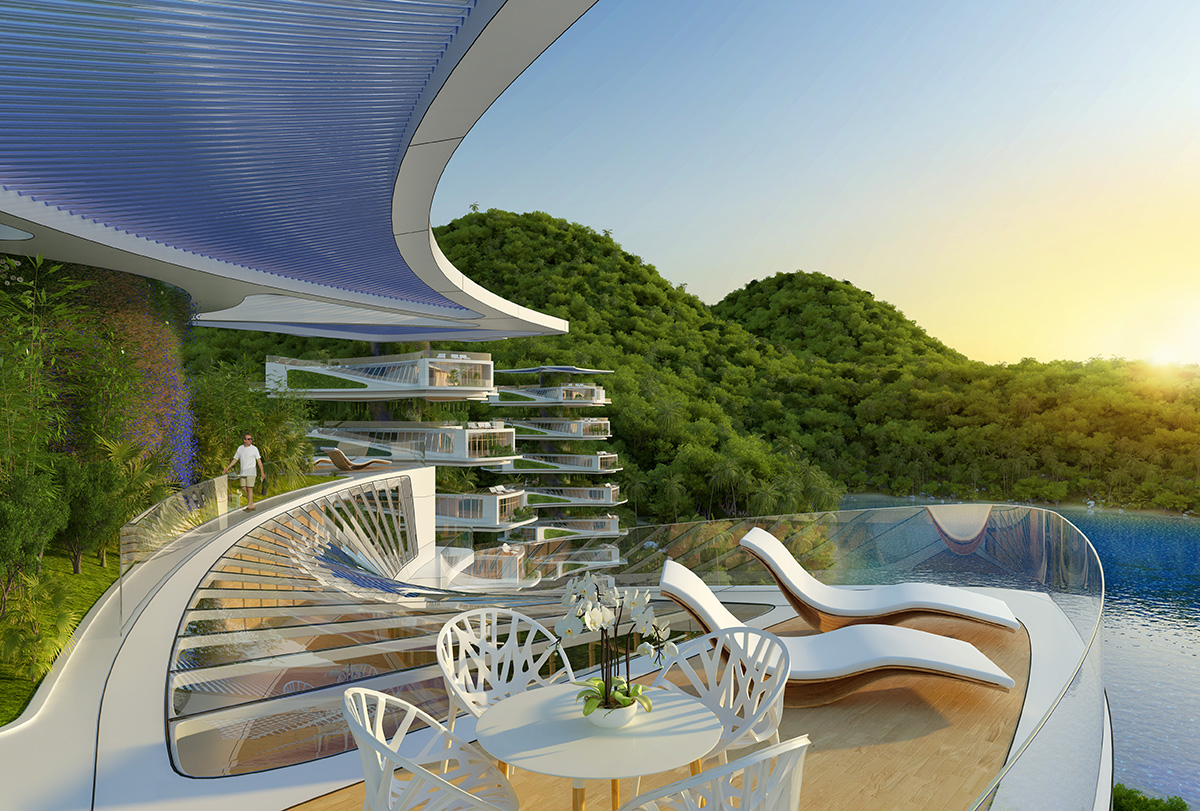By chance, I saw a rather strange concept like giant sea snails, but like countless other introduced designs, I didn’t pay much attention. Until I surprisingly saw the design author, and also a reputable architect’s office, Vincent Callebaut, I began to learn about it and introduce to you a design model with many missions. This is noble.

The current state of the Philippine coastlines faces many serious challenges such as overfishing, an explosion in tourism, terrible pollution of plastic waste and other toxins, as well as climate change. consequences that directly affect the health of residents
Therefore, the project architect hopes that through this project, the above problems will be solved, helping to balance the ecosystem. He wants to use as many natural, recyclable materials as possible. Minimize the energy generated by the project and increase renewable energy or can be self-produced by solar panels on the project’s sunny surface.
In addition, some design features of the project are unique that you may not see in other similar projects such as:
-The overall plan uses spiral lines by the Fibonacci golden ratio to lay out the works

-12 tower blocks can rotate around their axis to receive as much natural sunlight as possible, meeting the needs of tourists to experience
-Encourage visitors to engage with scientists, engineers, and ecologists to ensure experiences for better nature conservation going forward.

Nautilus Eco consists of 12 spiral towers inspired by the morphology and structure of biological species and endemic ecosystems.
Some rooms of Nautilus Eco can receive natural light throughout the day as the towers rotate 360 degrees to follow the sun.

Vincent Callebaut Architectures – the design unit of Nautilus Eco, said the project idea is to contribute to revitalizing the environment of the Philippine coastal region. This place can welcome more than 500 visitors. You can refer to the completed project to better understand this company’s design school: the unique DNA-shaped spiral tower

The ambition set for the project: “Zero-emission, zero-waste, zero-poverty” means “zero-emissions, zero-waste, zero-poverty”
Construction location: Palawan Island, Philippines
